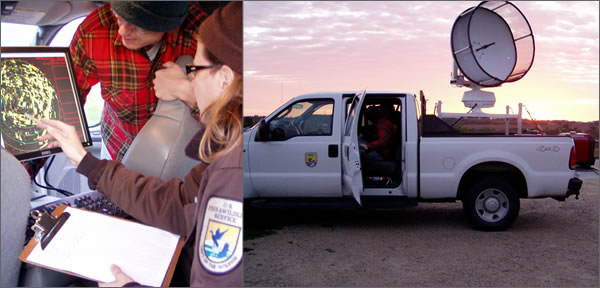The USGS UMESC partnered with the USFWS Horicon National Wildlife Refuge in Wisconsin to study Sandhill crane movements in relation to landscape features and wind energy development using a mobile marine radar unit. These data are being used in a modeling framework in conjunction with remotely sensed crop information, elevation, and weather data to understand how the birds behave in relation to the landscape, habitat, weather conditions, and the wind turbines. The work is intended to aid the U.S. Fish and Wildlife Service with the evaluation of wind power development proposals.
Marine radars such as this collect high-resolution data on the presence and movements of flying biota below the altitudes covered by the NEXRAD weather radar.
http://www.umesc.usgs.gov/terrestrial/migratory_birds/dsp_wind_power_development_waterbirds.html


